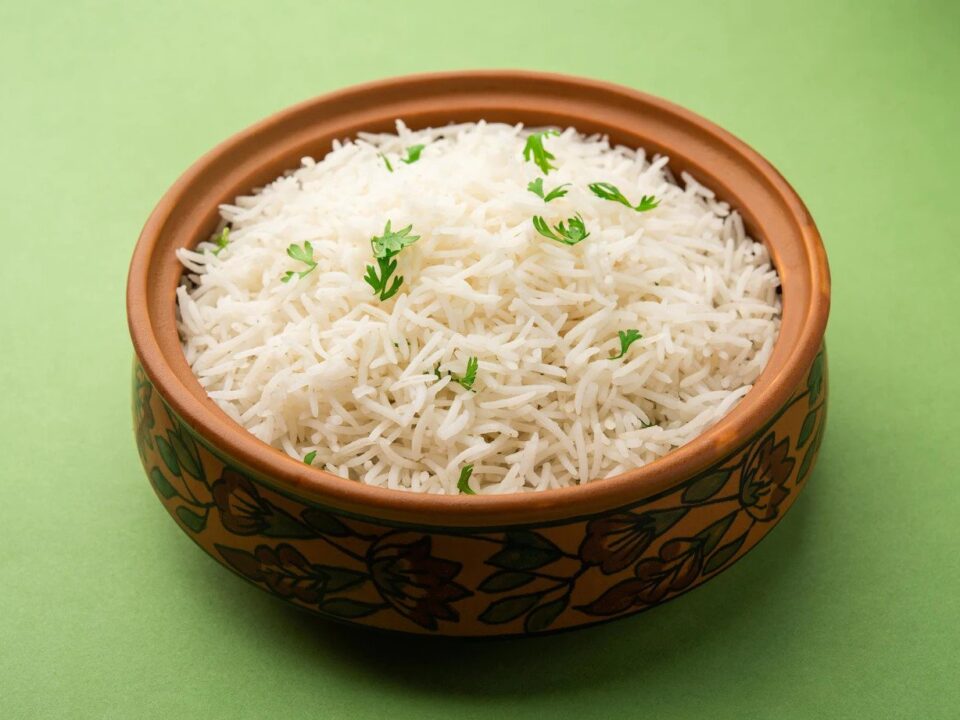Basmati, a long aromatic variety of rice traditionally grown in the Indian Subcontinent, is the essence of any Biryani. It has a different flavour, aroma and size than the regular brown/white rice traditionally used in Asian kitchens, so much so that if you cook a good quality Basmati rice, it aromatizes the whole house.
The word Basmati comes from Sanskrit words, namely vas (aroma) and mati (ingrained). Oxford supplies its meaning as “fragrant” or “full of aroma.”
The earliest mention of Basmati can be found in a text from 1766, Heer Ranja. Basmati rice is believed to have been cultivated in the Indian Subcontinent for centuries. Archaeologists have discovered a type of long-grain rice near Udaipur, India dating back to between 2000 and 1600 BC that they believe to be an ancestor of the basmati rice we enjoy today. India alone produces 70% of the world’s Basmati. In the past two decades, with Organic food being trending, some of the farmers have started to grow Basmati organically, though that is only a portion of the total produce.
Basmati is not used in everyday cooking in most households, as it is expensive compared to the usual brown/white rice. It is mostly used for the preparation of special dishes like Biryani and pulao. It imparts a peculiar taste and aroma to the preparation, as well as an aesthetic appeal as Basmati is much longer and thinner than the usual rice. In fact, to be considered as a Basmati, a rice grain has to be at least 6.61 mm long and 2 mm thin. Queen of Perfumed rice, you cannot imagine a biryani without the “queen of perfumed rice”.
In the Indian household, feeding Basmati to the guest is considered a sign of respect.
Basmati rice comes in two varieties, white and brown. Both have a nutty taste and a distinct smell. White Basmati, however, is more processed. The hull, bran, and germ are all removed. With brown Basmati, only the hull gets removed. Both types make for a delicious and healthy addition to your diet.
Both brown and white basmati rice provides many health benefits, including:
- Due to is its low glycaemic index of 50-60, it becomes a suitable alternative for people with diabetes.
- It has a high Fibre content, good for digestion and the digestive tract. Also, higher fibre diets can help to reduce your risk of developing certain types of cancers, particularly colorectal cancer. Eating 3 ounces of whole grains per day may lower your risk for this type of cancer by about 17%.
- Brown basmati rice is a whole grain, good for better heart health.
- Basmati rice is high in B vitamins, including B1 (thiamine). It has 22% of your daily recommended intake in each serving. Thiamine is crucial for brain health.
Nutrients Per Serving
1 cup of cooked white basmati rice contains:
- Calories: 210
- Protein: 5 grams
- Fat: 0.5 grams
- Carbohydrates: 46 grams
- Fibre: 0.7 grams
- Sugar: 0 grams
Basmati rice also contains many other essential nutrients, including:
- Vitamin B1 (thiamine)
- Vitamin B6Copper
- Folate
- Iron
- Magnesium
- Phosphorous
- Zinc


No Replies to "Basmati"